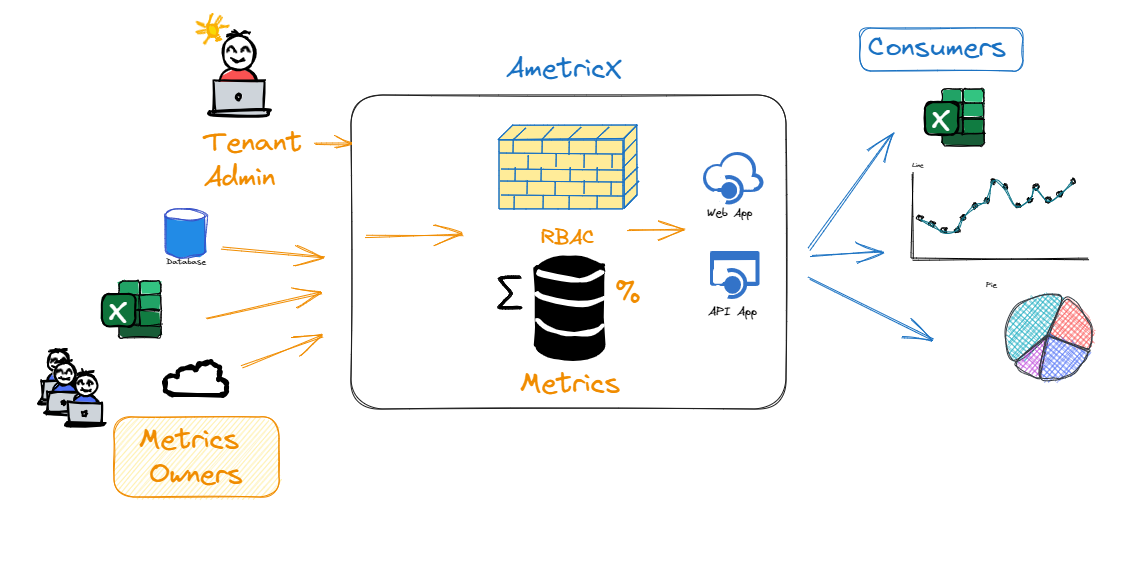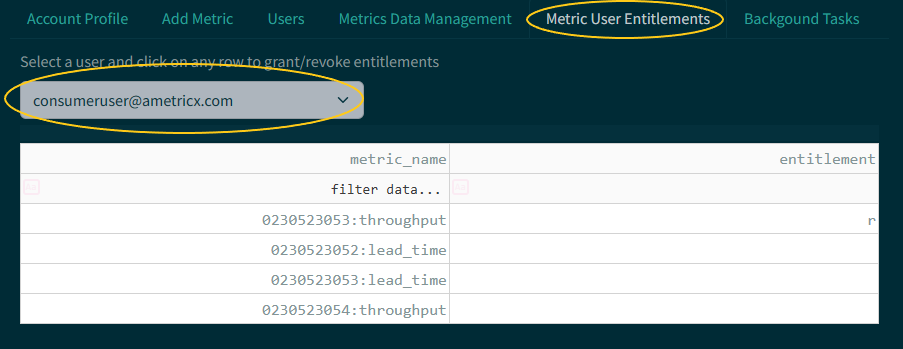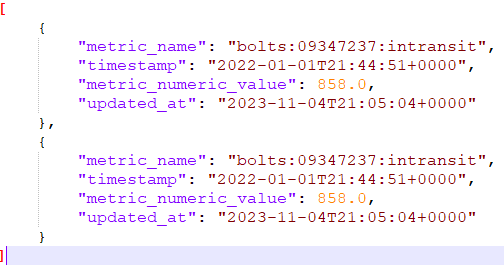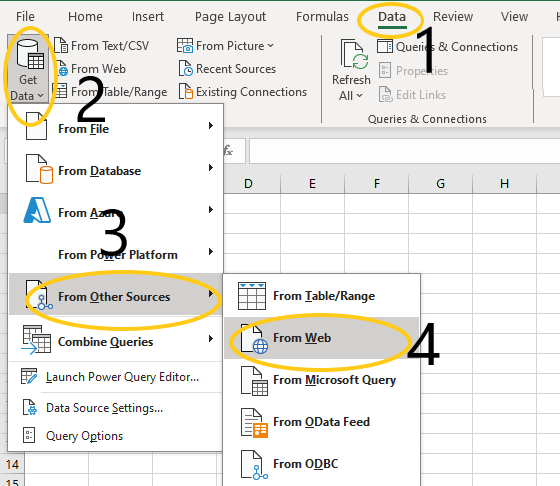Table of contents
- Guide to Secure and Efficient B2B CSV File Sharing
- 1. Centralized Data Hub for Multiple Customers:
- 2. Secure and Role-Based Access:
- 3. Flexible Data Upload Methods:
- 4. Granular Access Control:
- 5. File Size Restrictions:
- 6. Integration with Other Tools:
- 7. Schema Validation:
- 8. Low Code Data Integration:
- 9. Direct Integration with Excel:
- 10. Automating Data Exchange:
- Planning B2B Integration using CSV Files:
- Conclusion
Estimated reading time: 14 minutes
Photo by Markus Winkler on Unsplash
Guide to Secure and Efficient B2B CSV File Sharing
In today’s interconnected business landscape, sharing CSV files between organizations has become commonplace for collaborative ventures, data-driven decision-making, and streamlined operations. However, the seamless exchange of data comes with the inherent responsibility of implementing a robust and secure system to safeguard sensitive information and ensure the integrity of shared files. To navigate this landscape effectively, businesses need a well-structured process that facilitates smooth data exchange and prioritizes security and reliability. This guide provides a comprehensive roadmap for businesses seeking to implement a reliable CSV file-sharing process, incorporating best practices, security measures, and efficient workflows to foster a seamless and protected exchange of critical data. Whether a small startup or a large enterprise, following this guide will empower your organization to establish a dependable system for sharing CSV files, fostering trust, collaboration, and operational excellence in your business ecosystem.
Sharing CSV files between businesses requires a robust and secure system to ensure seamless data exchange. Follow this guide to implement a reliable process.
1. Centralized Data Hub for Multiple Customers:
Implementing a centralized data hub or leveraging a cloud-based platform for managing and exchanging CSV files can significantly enhance efficiency and collaboration within your business ecosystem. Establishing a centralized hub creates a unified and secure repository that streamlines data management processes. This centralized approach allows your business to organize, store, and update CSV files in a structured manner, providing a single source of truth for all stakeholders. Furthermore, it facilitates seamless collaboration and data exchange with multiple customers, promoting a more synchronized and transparent workflow.
A cloud-based platform adds another layer of flexibility and accessibility to this data management strategy. With files stored in the cloud, businesses can benefit from real-time updates, version control, and accessibility from anywhere with an internet connection. This improvement increases the speed of data exchange and ensures that all parties involved have access to the most up-to-date information. Cloud-based platforms often have advanced security features, protecting against unauthorized access or data breaches for sensitive CSV files. Establishing a centralized data hub or utilizing a cloud-based platform for CSV file management can enhance collaboration, streamline operations, and contribute to the overall efficiency of your business processes.
2. Secure and Role-Based Access:
Implementing robust security measures is paramount to safeguarding sensitive data, and when it comes to CSV files, encryption and password protection play crucial roles. Transform the data within them into a secure code that is unintelligible without the appropriate decryption key through the encryption of CSV files. This adds a layer of protection, ensuring the data remains unreadable and confidential even if unauthorized access occurs. Password protection further fortifies this defense by requiring authentication before accessing the CSV files. Utilizing strong, unique passwords and enforcing regular password updates enhances the security posture, mitigating the risk of unauthorized individuals gaining access to critical business information. Collectively, these security measures create a formidable defense against potential data breaches, fostering trust among customers and partners.
In addition to encryption and password protection, enforcing role-based access controls is instrumental in maintaining the integrity and confidentiality of CSV files. Role-based access controls define the permissions and actions each user or role can perform within the system. This ensures that only authorized personnel can access, view, edit, or manipulate shared data in CSV files. By tailoring access levels to specific organizational roles, businesses can limit potential vulnerabilities and reduce the risk of data misuse or accidental alterations. This granular control over data access strengthens security and aligns with the principle of least privilege, ensuring that individuals only have access to the information necessary for their specific roles, thereby minimizing the potential impact of security incidents.
AmetricX entitlements documentation
3. Flexible Data Upload Methods:
Facilitating user-friendly data sharing through a website interface for manual uploads is a practical approach to enhance accessibility and collaboration. Users can easily upload and share CSV files without requiring extensive technical expertise by implementing a straightforward and intuitive interface. This user-friendly website ensures a seamless experience, allowing individuals to manually input and exchange data efficiently. Such an interface can include features like drag-and-drop functionality, clear instructions, and visual cues, making sharing CSV files intuitive and accessible to a broader audience within the organization. This approach promotes user adoption and encourages efficient collaboration among team members, enabling them to share relevant data effortlessly.
In addition to manual uploads, incorporating a REST-based API (Application Programming Interface) is essential for facilitating automated and programmatic data exchanges. A REST API enables seamless communication between software systems, allowing for efficient and secure data transfer. A REST API allows external systems or applications to programmatically interact with the CSV file repository by providing a standardized set of rules and protocols. This automation streamlines data exchanges, reduces manual intervention, and enhances the overall efficiency of information flow. Businesses can integrate this API into their existing infrastructure, enabling seamless data exchange with external partners, third-party applications or other systems, fostering a more connected and streamlined data ecosystem.
4. Granular Access Control:
Granting administrators control over the reading and uploading permissions of individual CSV files is crucial for maintaining data security and integrity. This level of control ensures that sensitive information is only accessible to authorized personnel, minimizing the risk of unauthorized access or data breaches. Administrators can exercise oversight by specifying which users or roles have permission to read and upload specific CSV files. This feature is particularly beneficial when certain files contain confidential or restricted information that should only be accessible to a select group of individuals within the organization. By enabling administrators to manage these permissions, businesses can establish a robust access control system that aligns with their data security policies and regulatory requirements.
To further enhance access control, implementing fine-grained permissions becomes imperative. Fine-grained permissions allow for a more nuanced and detailed specification of access levels for different users or roles. Administrators can define precisely what actions each user or role can perform on individual CSV files, such as reading, uploading, editing, or deleting. This granularity ensures that permissions are tailored to the specific needs and responsibilities of each user or role, following the principle of least privilege. Fine-grained permissions contribute to a more secure data environment and enable organizations to adhere to regulatory compliance standards by precisely managing data access based on job responsibilities and organizational hierarchies.
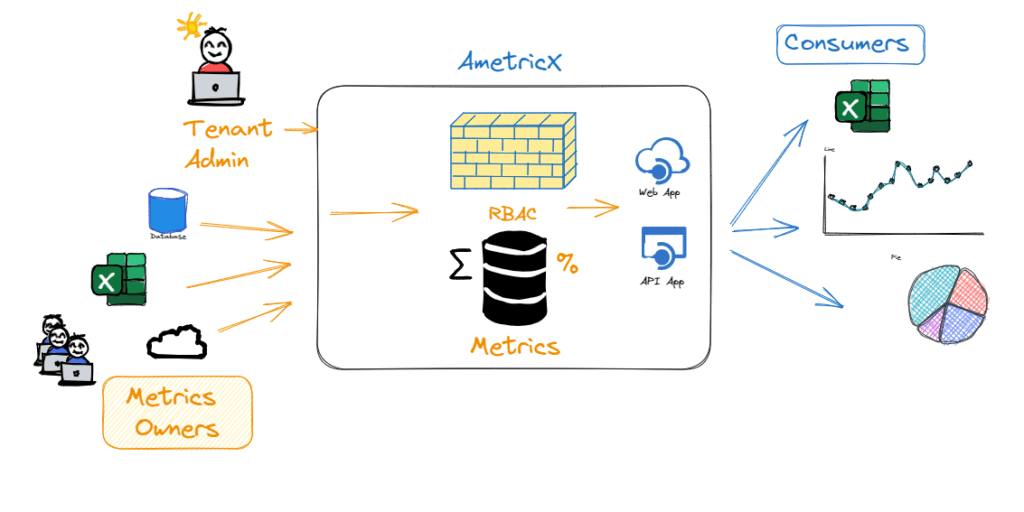
AmetricX
5. File Size Restrictions:
Establishing appropriate file size restrictions is essential to optimize system performance and prevent potential overload. By defining size limits for CSV files, businesses can ensure that the system resources are utilized efficiently, avoiding sluggish performance or system crashes. These restrictions are crucial when many users simultaneously upload or access CSV files. Implementing size limitations safeguards the overall system health and enhances user experience by maintaining responsiveness and minimizing latency. Additionally, setting reasonable file size restrictions contribute to better resource allocation, ensuring the system can handle concurrent file operations without compromising performance.
To enhance user awareness and compliance with file size limitations, it is essential to notify users of these restrictions and provide guidance on optimizing CSV files. Clear and proactive communication about size constraints helps users understand the system’s limitations and encourages them to adhere to best practices when creating or manipulating CSV files. Businesses can offer guidance on reducing file sizes by compressing data, eliminating unnecessary columns, or utilizing more efficient data formats. This proactive approach minimizes the risk of users encountering issues related to size limitations and promotes responsible data management practices, contributing to a more streamlined and efficient data exchange process within the organization.
6. Integration with Other Tools:
To enhance overall business efficiency and streamline processes, it is essential to facilitate seamless integration between the CSV file management system and other key business tools, such as Customer Relationship Management (CRM) systems, Enterprise Resource Planning (ERP) solutions, or Business Intelligence (BI) platforms. Integrating these systems allows for a more cohesive and interconnected business ecosystem, enabling data flow between tools and departments. For instance, integrating with a CRM system ensures that customer-related CSV data can be easily synchronized, providing a unified view of customer interactions and improving customer relationship management. Similarly, integration with ERP solutions facilitates the exchange of CSV files related to financial, inventory, or supply chain data, promoting a more synchronized and efficient business operation. By fostering seamless integration, businesses can harness the collective power of various tools, optimize workflows, and enhance data-driven decision-making processes.
In addition to integration, ensuring compatibility with common data formats is crucial for smooth interoperability. Supporting widely used data formats such as CSV, JSON, or XML enhances the system’s ability to exchange data seamlessly with diverse applications and platforms. This compatibility reduces the risk of data translation errors and simplifies the integration process, as different systems can interpret and process data in a standardized manner. Businesses benefit from increased flexibility and agility, as they can easily connect their CSV file management system with various tools and applications without the need for extensive customization or complex data transformations. This interoperability contributes to a more adaptable and collaborative business environment, where data can flow seamlessly across different platforms, supporting the organization’s objectives.
Retool workflow: ultimate step-by-step guide. From REST to Postgres
Step by step guide to integrate data from a REST API into a Postgres table with Retool workflows. This guide…
7. Schema Validation:
Prioritizing schema validation is paramount in ensuring the accuracy and consistency of data managed through CSV files. By establishing and enforcing a predefined schema, businesses can define the CSV files’ structure, data types, and relationships. Schema validation acts as a robust checkpoint, ensuring that the data adheres to the specified structure before it is accepted into the system. This proactive approach significantly reduces the risk of data inaccuracies, as any deviations from the expected format are identified and flagged during the validation process. Through schema validation, businesses can maintain high data integrity, providing a solid foundation for reliable decision-making and analysis.
Implementing checks to validate CSV files against predefined schemas is essential to enhance data quality further. These checks act as a preventive measure, automatically verifying that the incoming data aligns with the established schema. By identifying and rectifying discrepancies at the point of entry, businesses can avoid the downstream effects of inaccurate or inconsistent data. This level of validation ensures that the CSV files conform to the required standards, mitigating the potential for errors that could arise during data processing, analysis, or integration with other systems. Ultimately, prioritizing schema validation and implementing rigorous checks contribute to a data-driven environment where decision-makers can trust the accuracy and reliability of the information at their disposal.
8. Low Code Data Integration:
Consideration of low-code data integration platforms, such as Retool, can significantly expedite and simplify integration workflows within your business. Retool and similar low-code platforms are designed to empower users with varying levels of technical expertise to build and execute integrations without extensive coding requirements. These platforms often feature a user-friendly interface with pre-built components and connectors, enabling users to design integration workflows visually through a drag-and-drop approach. This approach reduces the reliance on traditional coding, making it accessible for non-developers to contribute to integration processes. Leveraging Retool Workflows can be particularly advantageous for businesses looking to streamline the data exchange process and enhance operational efficiency without needing a specialized development team.
Using low-code platforms accelerates integration workflows and allows for quick adaptability to changing business needs. With Retool Workflows, users can rapidly prototype, test, and deploy integration solutions, facilitating a more agile approach to data management. This flexibility enables businesses to respond promptly to evolving requirements or emerging opportunities, ensuring the data exchange process remains dynamic and aligned with organizational objectives. By embracing low-code data integration platforms, businesses can balance speed and functionality, empowering teams to implement and maintain integrations efficiently while minimizing the traditional challenges associated with extensive coding efforts.
9. Direct Integration with Excel:
Recognizing Excel as the most popular spreadsheet application, providing users with a seamless integration option is imperative, enabling them to import and export CSV files directly. Direct integration with Excel simplifies data exchange processes for users accustomed to spreadsheets. This integration allows for a smooth transition between CSV files and Excel, promoting a user-friendly experience and minimizing friction in data management workflows. Users can easily import CSV files into Excel for analysis, make edits or updates, and then export the modified data back into CSV format for integration with other systems. This bidirectional integration between CSV files and Excel enhances user convenience and ensures that businesses can leverage the strengths of both platforms cohesively.
To optimize user experience, it’s crucial to ensure compatibility with different versions of Excel. Users may be working with various Excel versions, and a system that accommodates these differences enhances flexibility. By supporting compatibility across multiple Excel versions, businesses can cater to the diverse preferences of their user base, fostering a more inclusive and accessible data management environment. This approach allows users to seamlessly integrate CSV files with Excel, regardless of their version, contributing to a more versatile and user-centric data exchange process.
10. Automating Data Exchange:
Automating routine data exchange processes is essential to enhance efficiency and reduce manual effort. By implementing scheduled jobs or triggers that initiate data exchanges at predetermined intervals or in response to specific events, data exchanged becomes automated. Automation accelerates the pace of data exchange and minimizes the risk of errors associated with manual interventions. Scheduled jobs ensure that data is consistently and reliably exchanged without requiring constant oversight, allowing users to focus on more strategic tasks. By automating routine processes, businesses can improve the overall workflow, reduce operational costs, and ensure timely and accurate data transfers.
In conjunction with automation, implementing notifications and logs is crucial to keep users informed about the status of data exchanges, alert users upon the successful completion of an exchange, and provide immediate feedback in case of failures or errors. Additionally, comprehensive logs offer a detailed record of data exchange activities, making it easier to troubleshoot issues, track changes, and maintain an audit trail. Businesses can foster transparency and accountability in their data exchange processes by keeping users informed through notifications and logs. This proactive approach allows users to address any issues that may arise promptly and ensures that data exchange operations align with business objectives and compliance standards.
Planning B2B Integration using CSV Files:
- Define Data Requirements:
Clearly outline the required data elements and formats for successful integration. - Select a Secure Platform:
Choose a secure and reliable platform for data exchange, considering factors such as encryption, authentication, and authorization. - Create a Data Sharing Policy:
Develop a comprehensive data sharing policy outlining access controls, encryption standards, and user responsibilities. - Test the Integration:
Conduct thorough testing to ensure seamless data exchange mechanisms with both internal and external systems. - Document the Process:
Document the integration process, including data flow diagrams, access controls, and troubleshooting procedures. - Provide User Training:
Train users on the platform, security measures, and best practices for sharing CSV files. - Monitor and Update:
Regularly monitor the system for performance and security, and update the integration process as needed to accommodate changes in business requirements.
Conclusion
In conclusion, implementing a secure and efficient system for sharing CSV files with multiple customers is pivotal to fostering streamlined B2B data integration. By adhering to the guidelines outlined in this blog, businesses can fortify their data exchange processes, ensuring the security of sensitive information and the seamless flow of data between diverse stakeholders. Clearly defining data requirements, selecting a secure platform, and creating a comprehensive data-sharing policy lay the groundwork for a robust system. Thorough testing, meticulous documentation, and user training further contribute to the reliability and effectiveness of the integration process.
As businesses navigate the complexities of B2B data exchange, the emphasis on continuous monitoring and updates cannot be overstated. Regularly evaluating the system for performance and security and promptly adapting to changes in business requirements ensures that the data integration process remains resilient and aligned with evolving needs. In essence, these guidelines serve as a roadmap for businesses to establish a secure foundation for CSV file sharing and cultivate a culture of efficiency, collaboration, and adaptability in their B2B data integration endeavors. With these practices in place, businesses can confidently exchange data with multiple customers, unlocking new possibilities for collaboration and driving their operations toward greater success.
The Power Of JSON: Unraveling The Magic Of Data With JSON Files
Unleash the potential of your data with the magic of JSON files. In modern web development and data interchange, JSON…
CSV Files and Excel integration
Share CSV / JSON with Excel integration Sharing CSV files with business partners can be challenging, especially when it comes…
Retool workflow: ultimate step-by-step guide. From REST to Postgres
Step by step guide to integrate data from a REST API into a Postgres table with Retool workflows. This guide…



